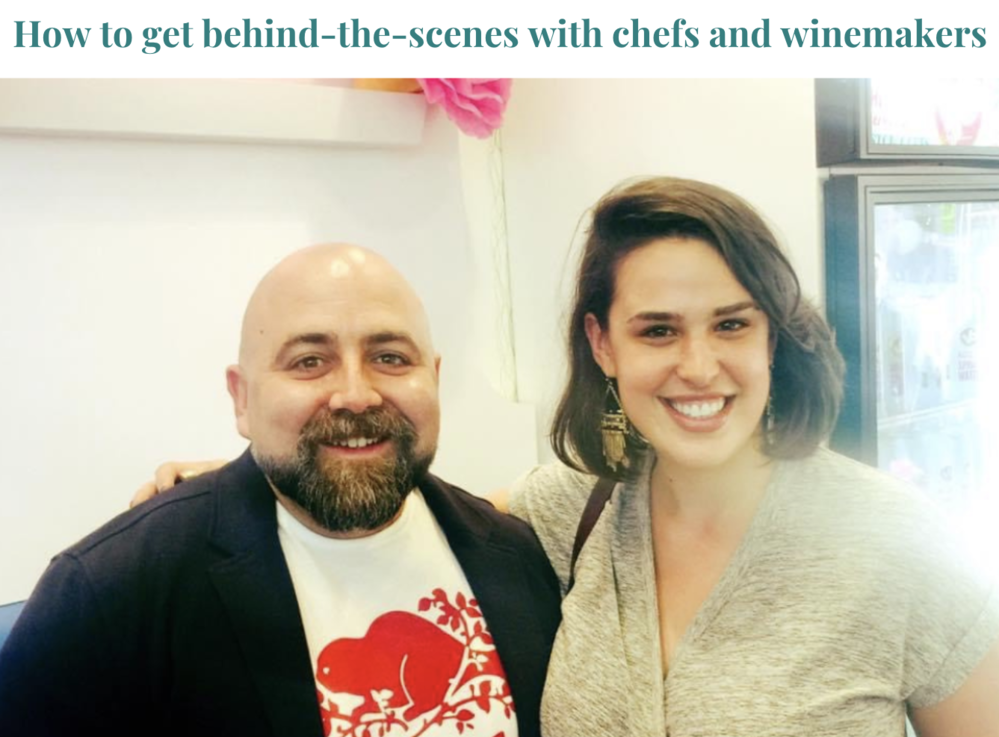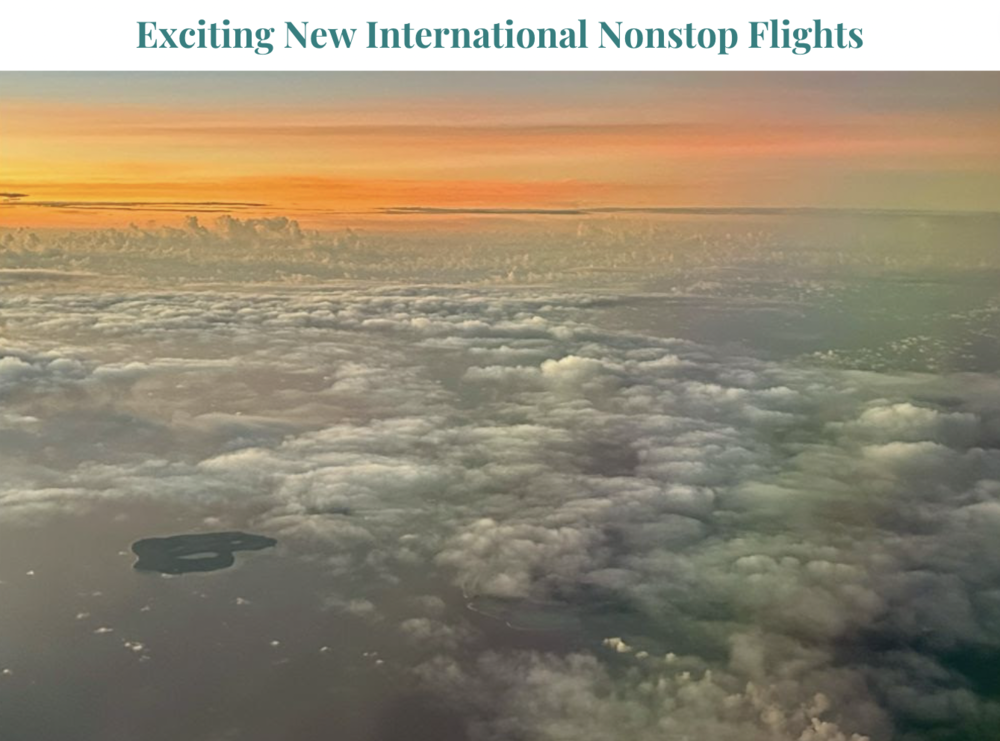Bali: Insider’s Guide
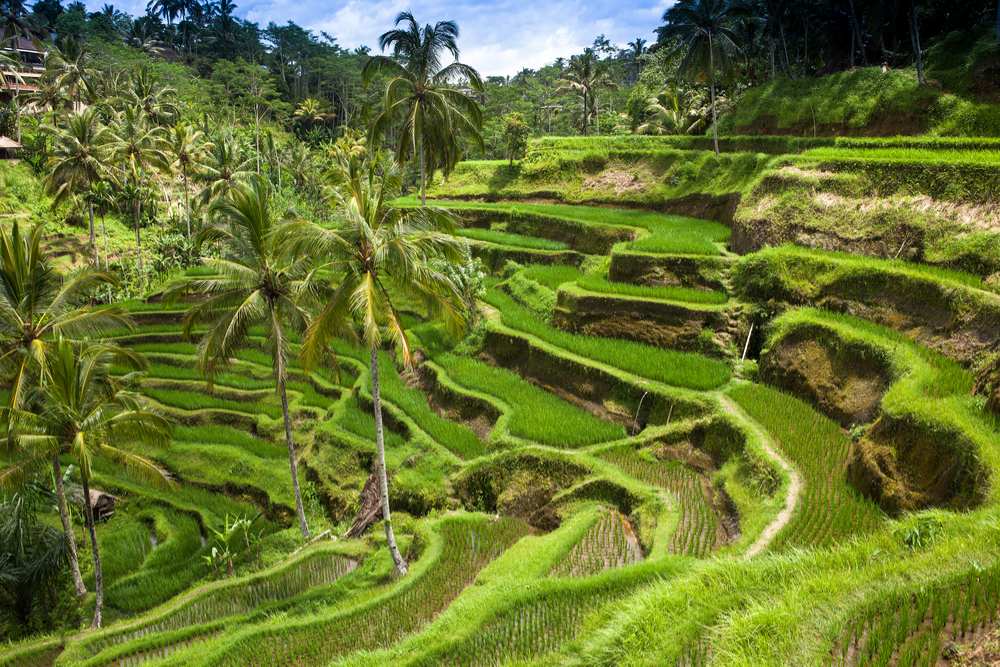 Green rice fields on Bali. Photo: Shutterstock
Green rice fields on Bali. Photo: Shutterstock
The insider advice on this page is from one of Wendy’s Trusted Travel Experts for Bali and Indonesia: Diane Embree of Michael’s Travel Centre/Bali Barong Tours.
Diane has been visiting Bali annually since 1988 and knows every rice paddy, temple, and hotel. Her moderately priced to high-end itineraries typically combine beach time with sightseeing and, if you like, can also include Bali’s best hiking, snorkeling, river rafting, or other adventure activities. Diane’s greatest pleasure, though, comes from arranging for travelers to meet with locals—medicine men, artisans, rice farmers—and to participate in traditional Balinese ceremonies that most visitors can’t access on their own. Diane can help with other parts of Indonesia too—in case you’re looking to see Borneo’s orangutans or Komodo dragons, visit the Toraja ethnic group in Sulawesi, explore ancient relics at Lake Toba in Sumatra, or make a side trip to Borobudur on Java—as well as stopovers in Asian gateway cities en route to and from Bali.
Where to Stay and Eat
Hotels worth the splurge
Beach resorts: Aside from being a gorgeous property, Amankila has perfected the art of fine service—staff are genuine and attentive but never hovering. The resort also has easy beach access, which can’t be said for many of Bali’s other luxury clifftop beach hotels. And even though the Oberoi is one of the older properties on the island, it’s one of the prettiest, and the service is top-notch. The Oberoi is close to the best restaurants, shops, and nightlife of Seminyak, though its lovely gardens and tranquil ambience make it feel as though you’re away from the crowds. It also happens to be on the best section of Seminyak Beach.
Inland resorts: Como Shambhala Estate is tranquil, luxurious without being ostentatious, and feels much more remote than its actual location. The views are lush and breathtaking, the food is fantastic, and for those who are so inclined, the hotel has a variety of wellness programs. (Be sure to take the short hike to the Kedara Water Garden and have a massage at the pavilion there.) All of the accommodations are in separate buildings, so you never share a wall with other guests; the Garden Rooms are a bit small, but the Terrace Suites are a great value. For complete privacy, the Retreat Pool Villas are the perfect option.
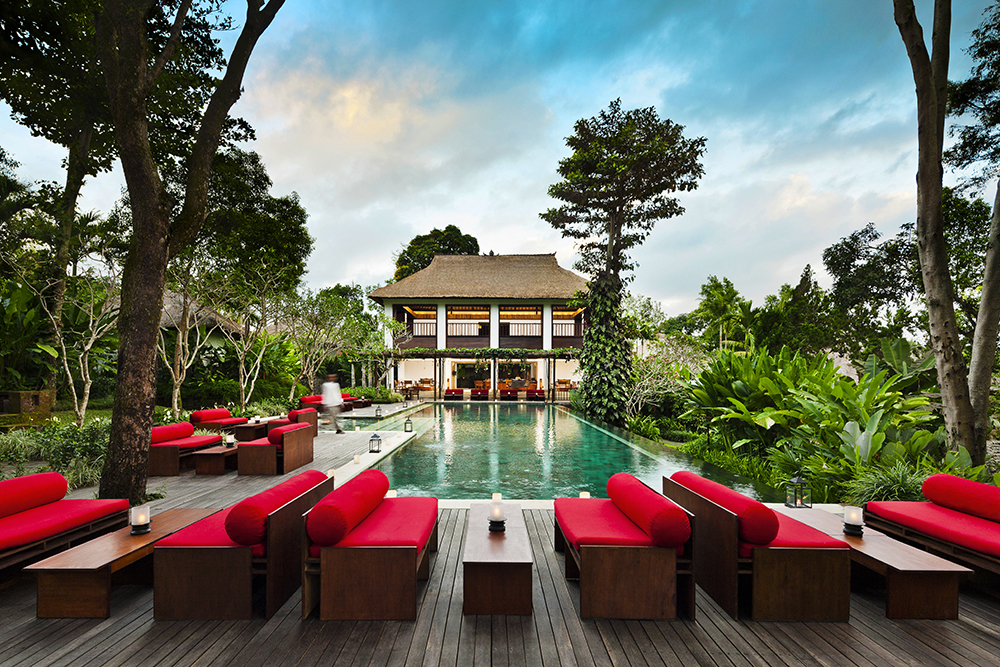
The main pool at COMO Uma Ubud, Bali. Photo: COMO Resorts
COMO Uma Ubud is in a fabulous setting—think tropical gardens and lush views—and their hip Italian restaurant and lounge, Cucina, is popular. The Garden Pool Villas offer excellent value for dollar. The hotel is a five-minute shuttle ride from the center of Ubud. Also near Ubud, Komaneka Tanggayuda is an intimate property with a traditional Balinese style and beautiful views, and it’s quieter and more remote without being too far from town.
If you prefer to be within walking distance of Ubud’s main drags, Tejaprana Bisma faces the rice fields and is only five to ten minutes by foot from the Ubud Monkey Forest. Tejaprana is a small, unassuming all-villa property. It’s tastefully appointed with traditional and contemporary elements and is very reasonably priced.
For travelers who prefer a brand-name hotel to the smaller boutique properties, Mandapa, a Ritz Carlton Reserve, is a spectacular property that terraces down the hillside to the Ayung River and centers around its own small working rice paddy. Great care has been taken in furnishing the suites and villas with original artwork and furnishings from top-notch local artisans. The Reserve Suites are the least expensive, but plenty large and beautiful. Just next door is Amandari, a mainstay in the Ubud area. Amandari has all the amenities one would expect from an Aman resort, but with a down-to-earth philosophy that brings a warm and homey atmosphere to the experience of staying there.
Visitors who want to be away from the main tourist areas should reserve a room at Munduk Moding Plantation, which is located on a coffee plantation in the mountainous Munduk countryside, a couple of hours from Ubud. This is a great area for hikers or those who want to retreat from the world for a few days. Munduk Moding has a small but lovely spa where treatments run one-third the price of comparable options at high-end resorts. The food at Munduk Moding isn’t as refined and creative as can be found at more sophisticated hotels, but the scenery and serenity of the place more than make up for that.
In many cases, Diane can offer preferred rates or amenities at the resorts mentioned here. And, though these properties can be pricey, she can easily suggest a number of properties (including some with private pools) that cost less and are quite lovely.
Best hotels for authentic ambiance
Though it’s not super high-end, Tugu Bali has a fabulous collection of Balinese and Javanese antiques. Located at Canggu—long an enclave of expats and now coming into its own as a beach destination—Tugu continues to reinvent itself with upgrades to its dining and beach facilities, while still retaining the original ambience. This property isn’t for people who prefer modern or contemporary decor. But, for those who like genuine Balinese flavor and whimsical character, it’s truly a gem.
Diane’s favorite hotel for authentic ambiance isn’t actually in Bali, but in Central Java near Borobudur, which is the world’s largest Buddhist temple complex. Accommodations at Plataran Borobudur are in exquisite Javanese and Balinese-style villas with lush private gardens. Somehow the local atmosphere of the villas manages to meld seamlessly with the elegance of the colonial-style restaurant. Plataran Borobudur is surrounded by rich countryside, and the temple complex itself can even be seen in the distance.
Dish to try
Some locals eat nasi goreng three times a day; it’s the Indonesian version of fried rice, seasoned with chiles, shrimp paste, and palm sugar, usually with a fried egg on top. You can learn how to make it yourself at Puri Lumbung, a small hotel in the Munduk countryside that hosts wonderful cooking classes.
What to Do and See
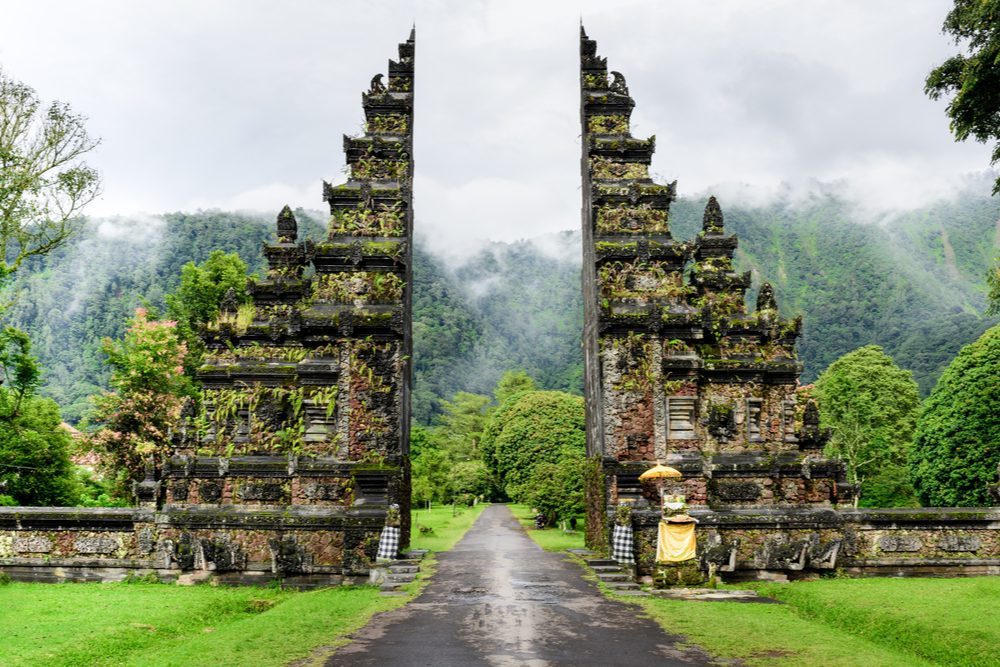
Handara Gate on Bali. Photo: Shutterstock
Don’t miss
Attending a performance of the trance-like kecak dance at ARMA (Agung Rai Museum of Art), on the outskirts of Ubud. The lead role is danced by Bali’s premier dancer, I Ketut Rina. It’s performed in the evening twice a month, at the full and new moons. Go early so you can browse the museum’s collections, amassed by a street peddler turned art dealer who buys Balinese pieces from foreigners so he can repatriate them to Indonesia.
While it’s easy to find strenuous volcano climbs and lots of up-and-down trekking in Bali, more leisurely trails are rare. One such option is the delightful 30- to 40-minute walk through the rice fields at Subak Sukabayu. The pathway is paved and mainly flat, making it easy to navigate. In addition to walking through the middle of the rice fields, you can see four volcanoes in the distance.
Don’t bother
If you’re looking for peace and quiet, don’t base yourself in Seminyak—especially during July, August, or Christmas/New Year’s. This is the most in-demand area of Bali, and its narrow streets are packed with shops, restaurants, and bars, which means gridlock on the streets and along the crowded sidewalks. In the busiest periods, you might even see trash wash up on the beach—not exactly anyone’s idea of paradise.
Bragging rights
Visit Puri Naga, a private home with a museum-quality assortment of treasures from throughout Indonesia, including the world’s largest collection of works by renowned Javanese painter Wahyoe Wijaya. If she’s available, owner Nadya—an American clothing designer who has lived in Bali for over 30 years—will show you around this magical place, an artist’s compound that is also home to the master painters, beaders, and tailors who create by hand Nadya’s works of wearable art. During your visit, Diane can even arrange for a private lesson in Balinese painting with a master, or a one-on-one session to design your own jacket.
For honeymooners or couples interested in renewing their commitment to one another, Diane can set up a Mejaya-jaya ceremony—traditionally one element in a Balinese wedding—at a small rural temple. You dress in Balinese clothes (a requirement for entering the inner areas of a Balinese temple), and a Hindu priest offers his or her blessing to you and your significant other: Old negative energy is cast out and new positive energy is invited into your life together. Though many hotels offer Balinese “weddings,” this ceremony is a true Balinese ritual, rather than a ceremony designed for tourists. And both opposite-sex and same-sex couples, married or unmarried, can participate in the Mejaya-jaya ceremony.
Best places to take the kids
The Elephant Safari Park, where you can ride the elephants or simply observe them close-up and watch them at work (some of them paint, and their “artwork” is sold in the gift shop). Go any day but Sunday, when it’s usually packed with Balinese families taking advantage of their day off.
The Bali Bird Park, a great destination for adults and children alike. The grounds are green and tropical, and the park boasts approximately 1,000 exotic birds from a variety of Indonesian islands, plus South America and South Africa. Children especially enjoy watching the birds being fed (feeding times are posted).
At Kemenuh Butterfly Park, there are (not surprisingly) myriad butterflies, including the famous Kupu-Kupu Barong. Visit the enclosure where you can see these giant moths hatching (some are as large as your hand). Not far from the butterfly park is Kemenuh Orchid Garden and Dragonfly and Bonsai Park. As its name implies, the Park has three sections that include an orchid garden, a dragonfly park where dragonflies are bred, and a bonsai park. At the back of the park is a slide pool, so the kids should bring their bathing suits.
Downtime
A traditional Balinese massage, based on ancient techniques, involves lots of long, gentle strokes, palm pressure, stretching, and acupressure. Day spas are inexpensive but inconsistent, as the good therapists inevitably get hired away by hotels. You’re usually much better off splurging for the treatment at your hotel spa (even the most modest hotels on the island have one).
Best Times to Go
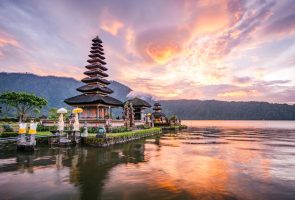
June has the most reliably pleasant weather (daytime temps in the 80s and gentle breezes to keep the sun from feeling too hot) and decent prices (high-season hotel rates don’t kick in until July).
April, May, mid-September, and the rainy-season months of October, November, and early December are other good options: They’re much quieter, and when it does rain, showers are usually limited to a few hours in the afternoon and overnight.
Worst Times to Go
Weatherwise, mid-December through March. Crowdwise, July, August, and early September.
Biggest Rookie Mistake
Expecting idyllic white-sand beaches. Bali’s beaches are mostly too rough for swimming (but good for surfing), and the quieter ones have little or no sand. Diane listens carefully to what every client is looking for in a beach—and tells them if they’re better off in the Caribbean.
Sightseeing from a beach resort. Most of Bali’s cultural attractions are a long haul from the coast; visiting them could add as much as two hours’ driving to your day—in some heavily trafficked resort areas, it can take a half-hour just to drive one block! The solution? Stay in the interior of the island during the time you’ll be touring. Once you’re at the beach, stay put.
Only considering familiar name-brand hotels instead of the lesser-known properties, which don’t have big marketing budgets but often deliver top-notch service and amenities at a lower price.
Instagram Moments
Attend a temple ceremony to photograph the locals as they walk in processions and present their offerings—ask at your hotel about any that might be happening nearby. (Keep in mind that if you ask one of the locals to take their photo, don’t offer a tip—it’s considered an insult.) Or for a quintessential Balinese landscape photo, head to the rice terraces in the Munduk countryside and near Sidemen Village in eastern Bali in the early morning or late afternoon.
The Souvenirs (and a word of warning)
Several small villages are known for specific crafts—Mas, for example, has woodcarvings; Celuk is the place for jewelry and Tohpati for batiks—but they’ve gotten extremely touristy over the years. Kunang is a modest little place in the Campuhan area of Ubud that sells midpriced jewelry, woodcarvings, and sometimes fabrics. The inventory changes often, but the quality is consistently good, unlike so many other shops on Bali. For travelers interested in buying art, Diane can arrange for a guide to take them around to the island’s best galleries.
One thing to keep in mind before you spring for big purchases—large artwork, furniture, stone carvings—is that while the shop workers will typically quote you a shipping fee upfront, that fee only covers the cost of getting your shipment to the nearest port in the United States. You might have to fork over several hundred dollars more to get it sent from the port to your house.
Tipping Tip
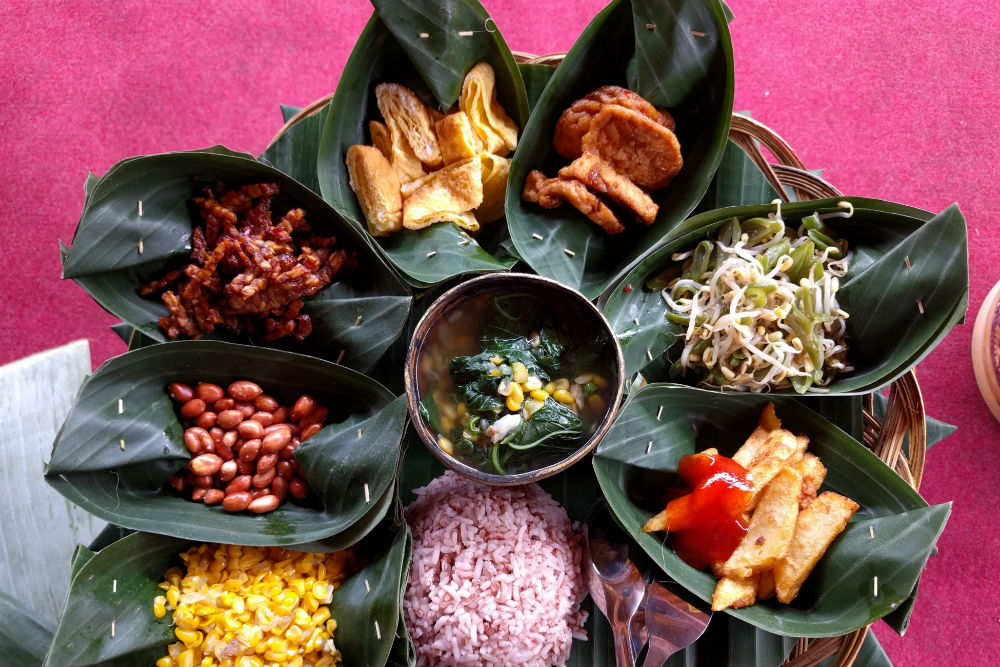
Service is included at almost every restaurant and hotel in Indonesia. However, even the locals throw down whatever loose change they have when they dine out—anywhere from 500 to 5,000 rupiahs (from 4 to 40 cents), but you can certainly tip a little more.
Airport Intel
You’ll need to pay a departure tax in rupiahs, in exact change, when you get to the airport. The international departure tax is currently 150,000 rupiahs (approximately $13); the domestic tax ranges from 20,000 to 40,000 rupiahs, depending on the airport.






